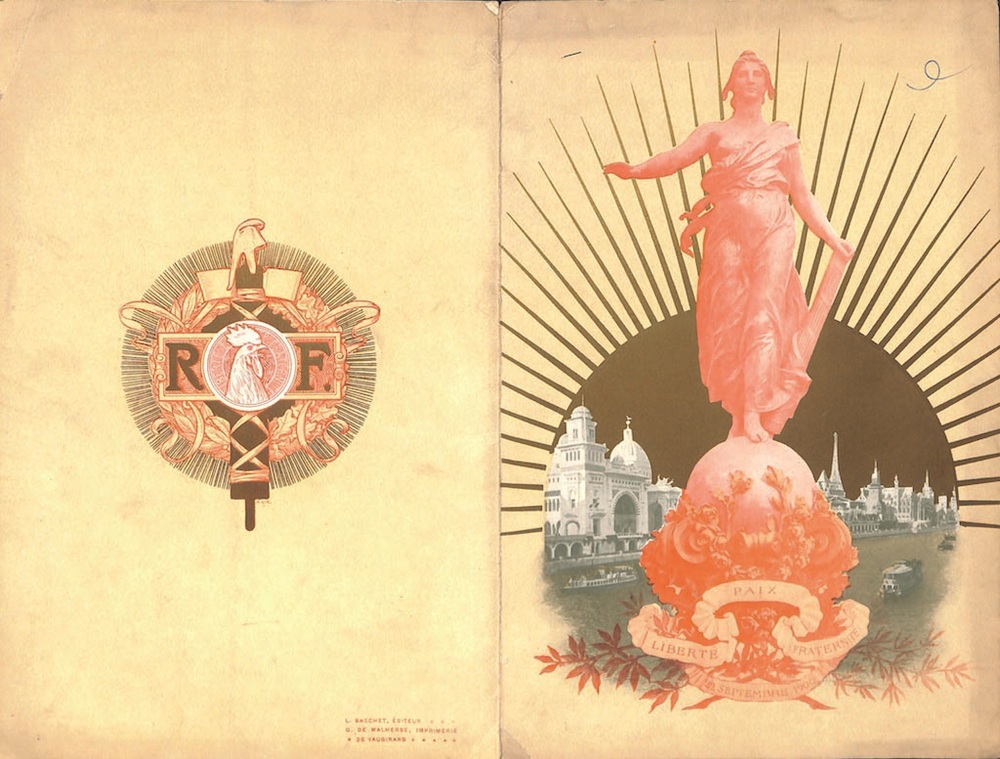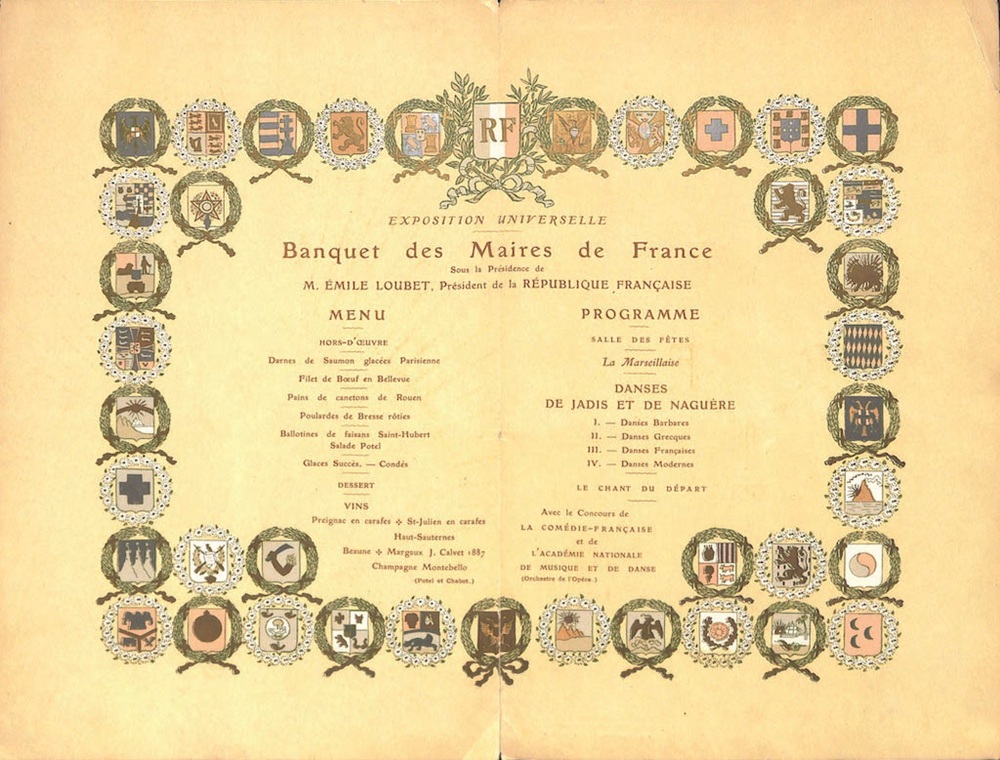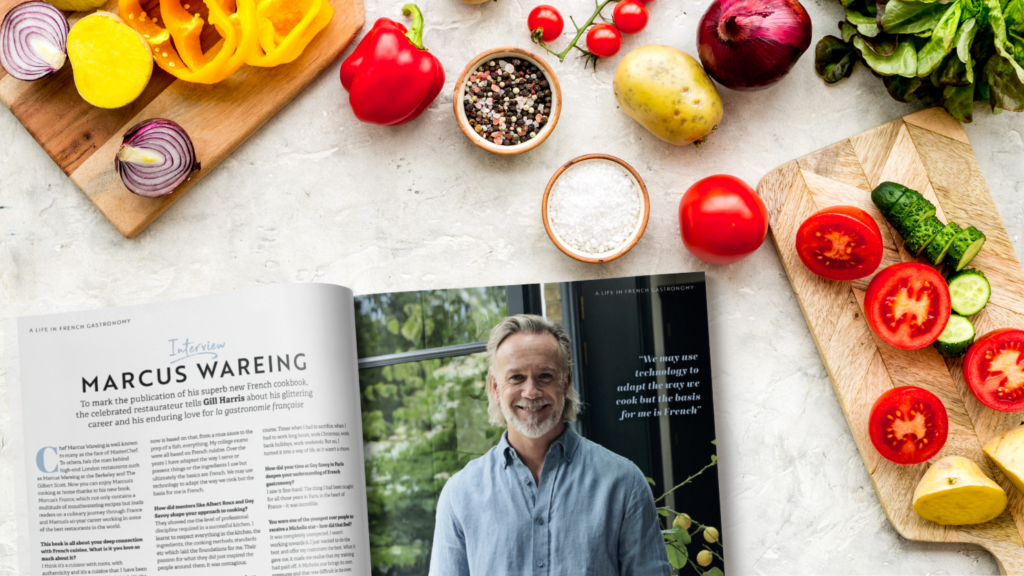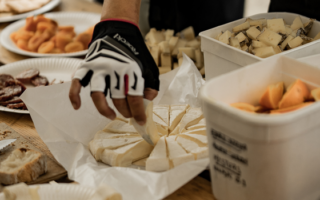
Mayors banquet: 2 Tonnes of Salmon & 33,000 Bottles of Wine
Two tonnes of salmon, 22,000 guests, waiters on bikes and 33,000 bottles of wine – Justin Postlethwaite tells the remarkable story of the 1900 mayors’ banquet in Paris, a gargantuan gastronomic gathering…
Never in France’s long history of indulgent culinary pleasure has there been a banquet as eye-popping in its grandeur and extravagance as the one held in the Tuileries Gardens in Paris on September 22, 1900. Το mark the city’s hosting of the Universal Exhibition, every mayor in France was invited to the Banquet des Tuileries by Émile Loubet, President of the Republic, and his Prime Minister, Pierre Waldeck-Rousseau. There were, according to best-guess figures compiled by essayist Adolphe Démy for his 1907 book about the exhibition, 20,777 mayors in attendance, with 22,278 guests in total.
The specific date chosen for the mayors mega-meal was not an accident – on September 20 108 years earlier, the First Republic had been born, one day after the proclamation of the abolition of royalty. President Loubet referenced this in his welcome speech to the gathered dignitaries: “When they proclaimed the Republic, they wanted to organise national defence at the same time as democracy, so they gave us an example of courage in its two finest forms, and this anniversary is the feast of patriotism as much as the feast of liberty.” By coinciding with the Universal Exhibition (or “World’s Fair’), the event became a supreme example of national chest-beating, a chance for France to showcase her prowess as a powerhouse of fine cuisine, wine and cheese, with representatives from all corners of the country in attendance.

“The world was watching France as it opened the century. Through this banquet, the country showed itself to be united.” wrote historian Loïc Bienassis in his 2024 book, La Grande Histoire de la Gastronomie. Entrusted with organising the mammoth meal – with military rigour – was one Monsieur Legrand, of Paris caterers Potel et Chabot, specialists in large-scale meals. The company was formed in 1820 when it opened a shop selling fresh, luxury foods on the Rue Montmartre, they cut their ‘grand buffets teeth with an 1845 dinner for 450 guests served at the Bourse for the Chamber of Commerce, and by 1900 were established as the capital’s go-to high-end caterers. They also organised fancy banquets in railway stations across France whenever a new train line opened.
A momentous meal
As far as impressive venues go, the enormous marquees set up in the alleyways of the glorious Jardin des Tuileries raised the bar. Setting up tables alone was an epic task. As one journalist from L’Ouest-Éclair (the forerunner of daily newspaper Ouest-France) who was sent there to report the event in minute detail-wrote: “Put end to end, the banquet tables were seven kilometres long those in the kitchens four kilometres and those in the pantries one kilometre”.

Mayors were seated alphabetically according to the department they came from, with those from Ain dining next to those from Aisne and so on. As well as those from mainland France, invitees from Algeria and Outre-Mer also attended. One of the most remarkable facts about the meal was that guests were all served within one hour and a quarter-after all, according to the President’s wishes, the meal should last no more than 90 minutes.
Legrand organised his team skilfully – under his command were 1,215 maîtres d’hôtels and 3,645 waiters and cooks, as well as six bike-riding supervisors who whizzed up and down the dining areas to tend to guests’ needs. The boss himself used a De Dion-Bouton 4CV car to get around!
But what exactly did the lucky lunch guests feast upon? The nine-course menu reads like a dream for gastronomes, although historians insist that the dishes were in fact standard banquet fare for the time:
- Hors d’oeuvres
- Parisian-style glazed salmon steaks
- Bellevue beef fillet
- Rouen duckling terrine
- Roast Bresse chicken
- Pheasant ballottines
- Potel salad
- Ice cream Succès
- Dessert

Wine carafes were well-stocked with tipples from the finest wine-growing regions – Bordeaux, Burgundy and Champagne – while guests enjoyed entertainment such as dancing (including French, Greek and ‘modern’ styles) and singing, and joined in a stirring rendition of La Marseillaise. Proceedings concluded with the serving of 1.500 bottles of Fine Champagne Cognac, accompanied by a post-prandial cigar offered to each mayor.
Jokers on the loose
So what did the attendees make of the luncheon? The Ouest-Eclair correspondent relayed the conviviality nicely: “Emotional and tender handshakes were exchanged between friends for an hour [..] Many mayors indulged in the small act of harmless vandalism that consists in taking away tangible memories of the banquet. […] The mayors, increasingly animated, spread out along the Rue Royale, the Rue de Rivoli and the Champs-Élysées. They greeted the carriage drivers and omnibus conductors, and looked like jokers on the loose. On the Champs-Élysées, the spectacle was truly epic. The brave mayors, in gangs, arm in arm, leave in human bunches, sweating, blowing, singing, joyful”.
Spare a thought for the dishwashers who had to deal with the 95,000 glasses and 250,000 plates, 125,000 of which were adorned with a facsimile reproduction of the Armes de la République tapestry produced by the historic tapestry factory Gobelins, the original of which was exhibited on-site.
The Mayors Banquet of 1900 went down as the largest sit-down meal in history, and an astonishing feat of slick organisation.
Looking for more French food and drink content?
In our magazine we offer a whirlwind tour of the best gastronomic destinations. Discover La Belle France’s renowned markets, quirkiest food festivals, most indulgent restaurants and foodie experiences.

Lead photo credit : Couverture_du_Menu_du_Banquet_des_Maires_de_France_1900
Share to: Facebook Twitter LinkedIn Email
More in History, Mayors, Paris



